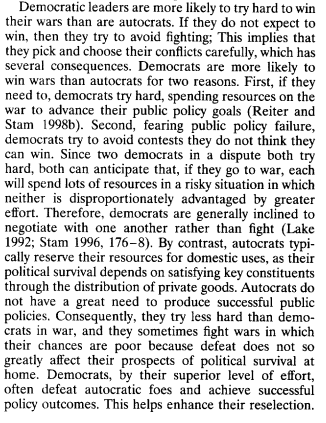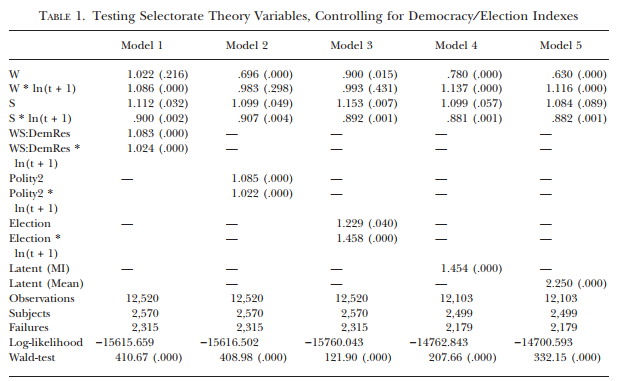Chapter 6 Selectorate theory (Week 8)
6.1 Discussion questions
BDM et al. (1999): What is their main argument? Is it convincing? Why?
Kennedy (2009): What is the selectorate theory? Are Kennedy’s critiques convincing?
What factors other than regime types or alternative theories can explain the empirical pattern that democracies are less likely to fight against each other?
Bruce Bueno de Mesquita: The Five Rules of Power Politics | Big Think
Selectorate theory and the risk of coups or mass uprising | Bruce Bueno de Mesquita
6.2 Selectorate theory
To be clear, this is a very ambitious paper, aiming to “bring closure to the debate on the causal mechanism” of democratic peace (BDM et al. 1999, 791). They begin by listing the main empirical pattern plus seven additional regularities of democratic peace:

The normative and extant institutional explanations cannot account for these regularities in a satisfying manner. The extant institutional-constraints arguments are monadic and “generally just assert that democratic leaders are more constrained” (p. 793). For the norms-based theory, there are two issues:
- The arguments are ad hoc and cannot address contradictory patterns (e.g. covert operations against fellow democracies).
- The arguments cannot explain imperialistic or colonial conquest.
They argue instead that:

Granted, they did address some potential counterarguments (e.g. democratic leaders’ diversionary incentives). But thinking through their theoretical arguments, can we come up with additional counterarguments?

